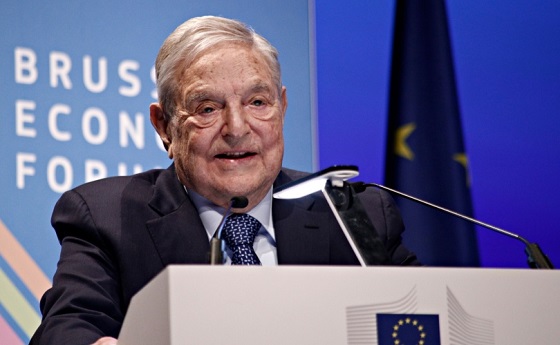Opinion
Judge orders 2-year-old IVF baby to be given to biological parents despite being raised by birth mom

From LifeSiteNews
With the rising popularity of IVF, egg donation, sperm donation, and surrogacy, Americans have been fed the marketing line that biology isn’t what makes a family. Yet in cases like Sophia’s, it becomes obvious that biology certainly matters when the adults say it matters.
According to Haaretz, an Israeli court on Sunday ordered that, following a lengthy legal battle over an IVF mix-up, a woman who gave birth to a daughter and raised her for two years must now give the girl to her biological parents.
The woman and her partner underwent IVF treatment at Assuta Medical Center in Rishon Letzion, but as she neared the end of her pregnancy, she underwent testing after it was discovered that the preborn baby had medical concerns. During that testing, it was revealed that the baby she was carrying had no biological connection to her or her partner. She had been implanted with someone else’s embryo.
A report on the situation found that the error was likely due to the heavy workload staff are facing at the fertility clinic following the government’s decision to move fertility treatments to private hospital settings – a move considered a financial benefit to the Health Ministry, hospitals, and doctors, but one that put patients at risk of errors.
Now, two years later, a judge has ordered the woman to hand the child, Sophia, who has a heart condition and developmental delays, over to her biological parents.
Benefits vs. damage
Judge Oved Elias of the Rishon Letzion Family Court said the girl should be given to her biological parents on the recommendation of Dr. Daniel Gottlieb, a psychologist appointed to the case, but against an affidavit from Welfare Ministry social workers and the head of Israel’s Child Protective Service. That affidavit advised that the girl should remain with the woman who gave birth to her, and her partner who have been raising her.
Elias determined that being given to her biological parents was in the child’s best interest because they are her natural parents. “The benefits that will arise from handing the girl over to her genetic parents and her life with them overcome the damage that will be caused by disconnecting her from the parents who have been raising her. The benefits of life with the genetic parents are, among others, in her future identity, connecting her to the family’s genealogy, a shared family story, and matching psychologies and family values,” he said.
He’s not wrong. Research has shown that children who live in a home with their married, biological parents are healthier both physically and mentally.
However, the removal of the child from the only parents she has known both inside and outside of the womb is likely to cause significant trauma. Studies have shown that taking babies from their birth mothers – whether they are biologically related or not – causes immense trauma for the child and can permanently alter her adult brain function later in life. While adoption seeks to heal the trauma that results when a birth mother feels unable to raise her child and lovingly selects a family to raise her baby, artificial reproductive technologies (such as surrogacy) deliberately create a trauma, with a child knowingly created and intended to be separated from his or her birth mother.
In this case, a mix-up during the use of these artificial reproductive technologies has created trauma for the child, the birth parents, and the biological parents.
Birth parents and biological parents speak out
“Given that there was a major error in the IVF process, and given that, with cooperation and in a planned, monitored way it can be rectified with minimum harm, I cannot accept the stance that what’s done is done,” the judge wrote.
The birth parents argued that the biological parents do not know how to care for the child and her health needs properly, and that the situation should be left as is because “the family unit embraces the baby.”
“As a mother, I don’t understand how they can tear my daughter from me after I birthed her with blood, sweat, and tears? She is the fruit of my womb and I’ve been raising her for more than two years. As far as I’m concerned, I’ll wait until justice is done at the High Court of Justice,” said Sophia’s birth mother, who feels as though she’s been reduced to the status of a surrogate.
“I am Sophia’s mother, and she is a sweet girl who only months ago underwent a third life-threatening surgery. I’m not a womb for rent, and with all my grief for the woman who gave the egg, she didn’t make the child. I was implanted with the embryo, carried her, and gave birth to her, and I will not allow my daughter to be uprooted from me. It’s inhumane. I won’t lend a hand in risking my daughter’s life.”
Sophia’s biological parents, however, said that Elias’ decision “rectified” the mistake made by the IVF clinic. That mistake was determined to be that both women were at the clinic at the same time and had been called back for an embryo transfer in the wrong order.
“She is coming home to live with the family she was supposed to be born into. Everything was done to try to protect her privacy and allow her to be raised in peace. We are overjoyed and waiting for the moment we will finally be able to hug our daughter and be hugged by her, which is something we’ve been waiting for for so long,” they said.
Sophia’s birth parents have appealed the decision to the District Court.
Sophia’s case shines a light on the potentially serious harms of IVF and sperm and egg donation. The fertility industry treats children like commodities to be created and destroyed at will with adults as the clients, making decisions that are in the adults’ best interest, not the child’s. With the rising popularity of IVF, egg donation, sperm donation, and surrogacy, Americans have been fed the marketing line that biology isn’t what makes a family. Yet in cases like Sophia’s, it becomes obvious that biology certainly matters when the adults say it matters.
“[…] #BigFertility routinely implants someone else’s biological children into an intended mother or surrogate via donor sperm, egg, or embryos,” said Katie Breckenridge of the organization Them Before Us. “When adults choose to separate a child from their biological parents at conception, we shower those adults with congratulations and often call it ‘progress.’ Only when it’s a case of an IVF mix up is it a problem that babies go home with genetic strangers. In other words, biology matters only when adults want it to matter.”
Reprinted with permission from Live Action.
Indigenous
Canadian mayor promises to ‘vigorously defend’ property owners against aboriginal land grab

From LifeSiteNews
Port Coquitlam, British Columbia, is fighting a Kwikwetlem First Nation’s claim that, if successful, would see aboriginals in essence be given large swaths of land owned by the city.
A Canadian mayor said he will “vigorously defend” the property rights of residents in light of a recent court ruling that gave a portion of a municipality to aboriginals via a title claim they won in court.
Mayor Brad West of Port Coquitlam, British Columbia, vowed to residents, “We have, and will continue to, vigorously defend public ownership of these lands, along with private property rights in our jurisdiction.”
“We will ensure the public is kept informed,” he promised in a post on X.
Port Coquitlam is fighting a Kwikwetlem First Nation’s claim made in 2016 that, if successful, would see the aboriginals in essence be given large swaths of land owned by the city.
The city said that at this time that there are “no civil claims initiated by any First Nations involving private property within the City of Port Coquitlam.”
The city promised in a statement that if the changes are made, it will notify residents immediately.
“While the City recognizes public concern resulting from recent media coverage of the Cowichan/Richmond case, it is important to note that no private lands within Port Coquitlam are currently the subject of litigation,” the statement read.
West’s comments come in light of a recent court ruling in British Columbia affecting property rights, Cowichan Tribes v. Canada (Attorney General), which saw the provincial Supreme Court rule that decades-long land grants by the government were not valid and violated a land title held by the tribes.
The ruling included large parts of Richmond, British Columbia, which is in the Vancouver area, essentially given to local tribes.
There are many other similar legal battles taking place in British Columbia, which, unlike the rest of Canada, has no official treaties in place with local Indigenous peoples but only agreements without legal clarity.
As reported by LifeSiteNews, John Carpay, founder and president of the Justice Centre for Constitutional Freedoms (JCCF), noted the court “told the people (of various ethnicities) who live in some parts of Richmond, B.C., that the money they paid for their own properties does not guarantee them the right to own and enjoy their own homes.”
Carpay noted that “the fact that aboriginal ethnic groups arrived in Canada earlier than other ethnic groups should be completely irrelevant when it comes to the application of the law.”
“Nobody disputes that different aboriginal tribes lived in this land before the arrival of Europeans, Africans, and Asians. The question is: Why should this fact matter?” he noted.
Carpay observed that when officials and courts apply the “law” differently to come after “Canadians because of their race, ancestry, ethnicity, or descent,” the predictable and inevitable outcome “is strife, resentment, and fear.”
Health
Organ donation industry’s redefinitions of death threaten living people

From LifeSiteNews
Playing fast and loose with the definitions of death for the sake of organ donation must stop.
Another congressional committee is investigating more whistleblowers’ complaints regarding the organ transplantation industry. United States House Ways and Means Committee Chairman Jason Smith and Oversight Subcommittee Chairman David Schweikert are seeking answers from Carolyn Welsh, president and CEO of the New Jersey Organ and Tissue Sharing Network (NJTO), regarding multiple allegations of legal and ethical violations on her watch.
The complaints include the horrific case of a “circulatory death” organ donor who reanimated prior to organ retrieval. Despite the fact that the patient had regained signs of life, NJTO executives actually directed frontline staff to continue the organ recovery process. (Thankfully, hospital personnel at Virtua Our Lady of Lourdes Hospital in Camden, New Jersey, refused this request.) NJTO is also accused of pressuring the families of potential donors by falsely implying the New Jersey Department of Motor Vehicles had registered a consent to donate when that was not known to be the case. NJTO apparently also continued to insist that people were registered donors even after they had removed their consent to donate from their driver’s licenses. The official complaint further states that NJTO allegedly tried to delete evidence pertaining to the committee’s investigation.
Since 1968, when 13 men at Harvard Medical School redefined “desperately injured” people as being dead enough to become organ donors, organ procurement has continued to push the boundaries of life and death in a never-ending quest for more organs. When the first and only multicenter prospective study of brain death discovered in 1972 that a brain death diagnosis did not invariably correlate with a diffusely destroyed brain, principal investigator Dr. Gaetano Molinari pointed out that “brain death” was a prognosis of death, and not death itself. Dr. Molinari wrote:
[D]oes a fatal prognosis permit the physician to pronounce death? It is highly doubtful whether such glib euphemisms as ‘he’s practically dead,’… ‘he can’t survive,’ … ‘he has no chance of recovery anyway,’ will ever be acceptable legally or morally as a pronouncement that death has occurred.
But despite Dr. Molinari’s doubts, history shows this is exactly what has been accepted, and the rising numbers of people who have been taken for organ harvesting while still alive bears this out. Even though “brain dead” TJ Hoover III was still looking around and visibly crying such that two doctors refused to remove his organs, Kentucky Organ Donor Affiliates ordered their staff to find another doctor to perform the procedure. “Circulatory death” donor Misty Hawkins was found to have a beating heart when her breastbone was sawed open for organ procurement. And Larry Black Jr. was rescued from the operating room table just minutes before having his organs removed, and went on to make a full recovery.
Given that we have been stretching the definitions of death for nearly 60 years, is it any wonder that organ procurement personnel appear to be thinking “he’s practically dead,” “he can’t survive,” “he has no chance of recovery anyway” as they push still-living people towards the operating room?
But it’s not just organ procurement teams that are pushing these new definitions of death. Just three weeks after failing in their attempts to broaden the legal definitions of death by revising the Uniform Determination of Death Act (UDDA), the American Academy of Neurology (AAN) published a new brain death guideline that explicitly allows brain death to be declared in the presence of ongoing brain function. Since this obviously does not comply with the UDDA, which requires “the irreversible cessation of all functions of the entire brain including the brain stem,” the AAN has been trying to get around the law by contacting state health departments, medical boards, medical societies, and hospital associations requesting that they acknowledge the AAN’s brain death guideline as the “accepted medical standards” for declaring neurological death.
The AAN has also just published a position statement of additional guidance on brain death discussing how to handle objections to the brain death diagnosis. Even though the AAN’s brain death guideline does not comply with U.S. law and has been proven to be unable to predict whether or not a brain injury is irreversible, the AAN still wants to make the use of their guideline mandatory. If a family’s objection to a brain death diagnosis cannot be overcome, the AAN says that life support may be unilaterally withdrawn – over the family’s objections. The AAN also says that clinicians are professionally obligated to make a brain death determination, and that they should be credentialed to do so according to the standards of the AAN guideline. Laughably, the AAN recommends the Neurocritical Care Society’s brain death determination course, which consists of a one-hour video, followed by unlimited attempts to correctly answer 25 questions, following which a certificate of completion can be had for as little as six dollars.
The Dead Donor Rule is an ethical maxim stating that people must neither be alive when organs are removed nor killed by the process of organ removal. Redefining neurologically injured people as being “brain dead” and redefining people who could still be resuscitated as being dead according to “circulatory death” standards have for too long allowed organ procurement teams to meet the letter of the Dead Donor Rule through sleight of hand. Playing fast and loose with the definitions of death for the sake of organ donation must stop. Patients with a poor prognosis must not be considered “dead enough” to become organ donors. People registering as organ donors must be given fully informed consent as to the risks involved.
Even utilitarian philosopher Dr. Peter Singer has called brain death an ethical choice masquerading as a medical fact. Imposing mandates that force patients and doctors to accept these questionable ethical choices is NOT the best way to establish trust.
Heidi Klessig MD is a retired anesthesiologist and pain management specialist who writes and speaks on the ethics of organ donation and transplantation. She is the author of “The Brain Death Fallacy” and her work may be found at respectforhumanlife.com.
-

 Alberta1 day ago
Alberta1 day agoPremier Smith explains how private clinics will be introduced in Alberta
-

 Alberta1 day ago
Alberta1 day agoAlberta introducing dual practice health care model to increase options and shorten wait times while promising protection for publicly funded services
-

 Business1 day ago
Business1 day agoUS Supreme Court may end ‘emergency’ tariffs, but that won’t stop the President
-

 Aristotle Foundation1 day ago
Aristotle Foundation1 day agoWe’re all “settlers”
-

 Indigenous1 day ago
Indigenous1 day agoIndigenous activist wins landmark court ruling for financial transparency
-

 Alberta1 day ago
Alberta1 day agoRed Deer’s Jason Stephan calls for citizen-led referendum on late-term abortion ban in Alberta
-

 espionage1 day ago
espionage1 day agoSoros family has been working with State Department for 50 years, WikiLeaks shows
-

 Health1 day ago
Health1 day agoMore than 200 children will receive dangerous puberty blockers for new UK study

